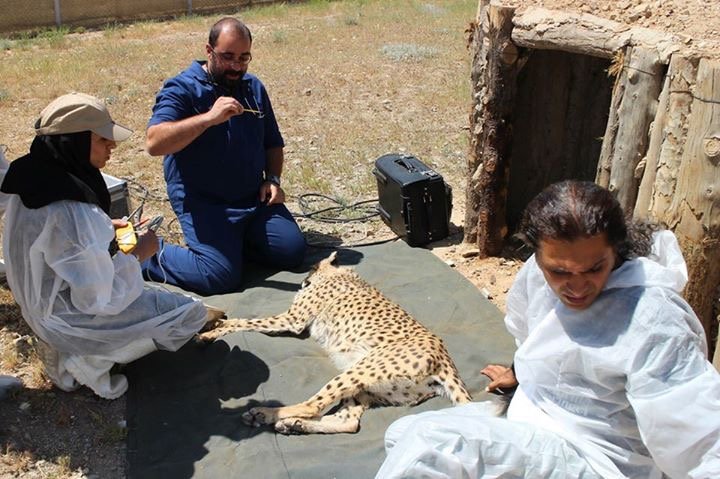Why wildlife management in Iran needs more support?

Like forests, wildlife has had special value for people, not only for the meat and hides which provides us with food and clothing, but also because we enjoy knowing that we share the Earth with other living creatures, enjoy observing them, and in some cases have made them cultural and even sacred symbols.
Like forests, wildlife has had special value for people, not only for the meat and hides which provides us with food and clothing, but also because we enjoy knowing that we share the Earth with other living creatures, enjoy observing them, and in some cases have made them cultural and even sacred symbols.
On one hand are those who believe that wildlife is there for people to harvest and that the greatest good for the greatest number of people will be the largest harvest that is suitable. On the other hand are those who believe that wildlife is important because living creatures are beautiful, interesting, an important feature of the landscape, raise our spirits and have religious value to us, and, moreover, that they have an intrinsic right to exist, just as we do.
One thing is clear: Many species of our wildlife have declined greatly in abundance e.g. Persian leopard, sea cows, and Asiatic black bear; some have become endangered e.g. Caspian seal, Persian fallow deer, Asiatic cheetah, and Siberian crane; and some have gone extinct e.g. Persian lion and Caspian tiger.
Iran can be regarded as a quadri-directional bridge between four major geographical regions: Central Asia, the Indian subcontinent, the Arabian Peninsula and the lands bordering the Black Sea. It is at the crossroads between four distinct floral and faunal regions. We can use this historical range to estimate the probability of extinction.
The first estimate of the probability that the Persian lion would become extinct, made in the early 20th century, the lions had disappeared from Mesopotamia, but still occurred in several areas in Khuzestan and Fars. The last lion was seen by an Indian surveyor of the British Army in 1942, in an area 65 km northwest of the city of Dezful, Khuzestan province. The Persian lion now survives in the Gir forest reserve in northwestern India where the population is estimated to be about 350 individuals. At least 100 animals are outside the Gir Forest protected area and total number of mature animals is about 175. But lions are locally extinct in Iran.
How could this happen?
The explanation is that the Persian lion is one of many species that appear always to have been rare. Rarity does not necessarily lead to extinction, but a rare species, especially one whose population has undergone a rapid and large decline, needs careful attention and assessment as to whether it is threatened or endangered. None of these attempts implied for Persian lion in Iran so it became extinct forever in Iran. Some other species such as Asiatic cheetah, Persian leopards, Asiatic black bear, Persian fallow deer, Siberian Crane, and many other species experienced large decline so it is quite important for us to change our approach.
Proposed principles
At first we need a safety factor in terms of population size, to allow for limitation of knowledge and imperfections in procedures. We shouldn’t harvest a population such as Lorestan mountain newt to the point where it has been reduced to the lowest limit. Instead, we should assume that our estimate of that lower limit is crude, and leave more animals than that minimum would suggest. Lorestan mountain newt is endemic to four streams (in a single catchment area) within a restricted area of the southern Zagros Mountains of Lorestan (Shahbazan region). It has an altitudinal range of 1,500-2,000m. This is now a relatively rare species, with a dramatic decline within the previous ten years. The population is estimated to number fewer than 1,000 mature individuals.
Second step refers to concern for the entire community of organisms and all the renewable resources, so that policies developed for one species are not wasteful of other resources. Meanwhile, maintenance of the ecosystem of which the wildlife are a part, is essential because it minimize the risk of irreversible change and long-term harm as a result use.
The cheetah was once common throughout the drier steppic regions of Iran (and southwest Asia) and was found in most regions of the eastern half of the country until a generation ago, but it is now restricted to a few areas in northeast and east-central Iran. The habitat of Cheetah in Iran is fragmented and it accounts as an irreversible change and long-term harm so the situation is getting harder and harder for this subspecies who also experienced bottle-neck situation.
Continual monitoring, analysis, and assessment is the next step which requires many experts, sufficient money, governmental support, and social cooperation. We should continue to apply science to pursuit of knowledge about the wildlife we are concerned with and their ecosystems, and make the results available to public.
These principles broaden the scope of wildlife management from a narrower focus on a single species to inclusion of the ecological community and ecosystem. As said Edward A. Keller this is a starting point for an improved approach to wildlife management.

Leave a Comment